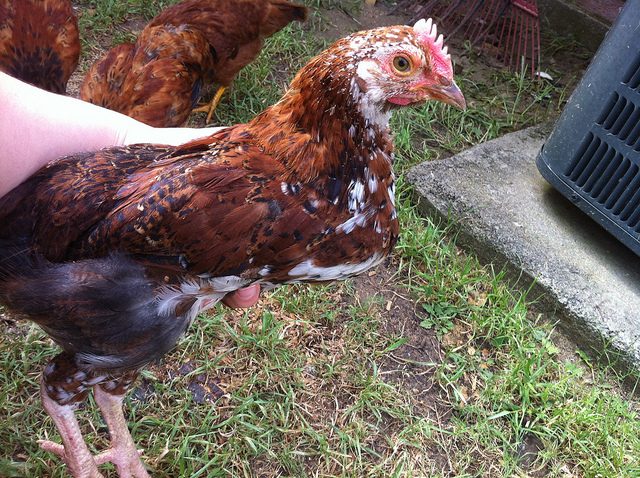So, we're pretty sure one of our chicks is a rooster, and you guys on here confirmed it. Now we have another we're not sure about. If I end up with only two hens after all this I'm going to be so sad 

This is my 9-10 week old speckled sussex. What do you think?

From front to back, speckled sussex ?, easter egger hen, rhode island red, easter egger roo

This is the other one we're sure is a roo, on the left here.

We're looking for new homes for him and if we have to the speckled sussex too, and then we'll figure out where we're going to get older pullets so we're sure - we wanted 5 hens. All of the stores that were selling the chicks said they had 90% accuracy, but apparently the one store we bought 3 of ours from doesn't.


This is my 9-10 week old speckled sussex. What do you think?

From front to back, speckled sussex ?, easter egger hen, rhode island red, easter egger roo

This is the other one we're sure is a roo, on the left here.

We're looking for new homes for him and if we have to the speckled sussex too, and then we'll figure out where we're going to get older pullets so we're sure - we wanted 5 hens. All of the stores that were selling the chicks said they had 90% accuracy, but apparently the one store we bought 3 of ours from doesn't.



 I agree.
I agree.
